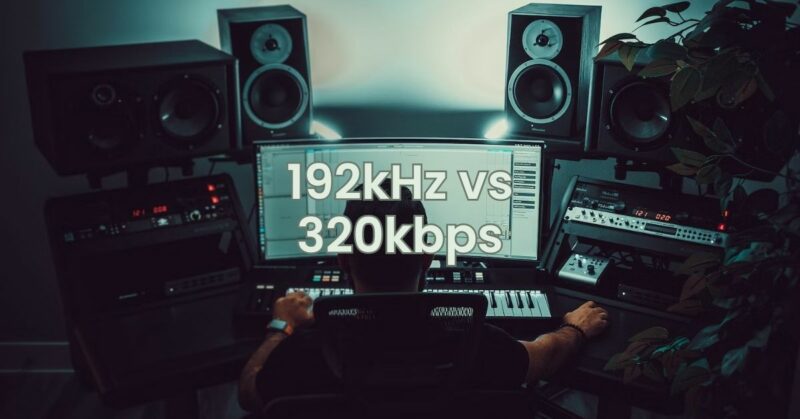In the world of digital audio, two formats that are often compared for their potential to deliver high-quality sound are 192kHz and 320kbps. Each format represents a different approach to audio quality, with one focused on high sample rates, and the other on high bitrates. In this article, we will explore the characteristics of 192kHz and 320kbps audio, their advantages, and when it is appropriate to use each format.
192kHz:
1. Sample Rate (192kHz): 192kHz represents the number of audio samples taken per second to represent an analog audio signal digitally. This high sample rate is significantly higher than the standard 44.1kHz and even exceeds the commonly used 48kHz sample rate.
A high sample rate like 192kHz allows for more precise audio capture, especially for higher frequencies, resulting in better audio quality and improved representation of sound waveforms.
320kbps:
1. Bitrate (320kbps): Bitrate in digital audio refers to the number of bits used to represent each second of audio data. In the case of 320kbps, it means that the audio data is compressed at a rate of 320 kilobits per second.
320kbps is a high-quality audio compression rate, commonly used in formats like MP3 (MPEG-1 Audio Layer III). It strikes a balance between audio quality and file size, delivering sound that is generally perceived as very close to or indistinguishable from the original CD quality.
Advantages of 192kHz:
- High-Fidelity Audio: 192kHz provides exceptionally high audio fidelity, especially for capturing higher frequencies and subtleties in the sound. It is well-suited for audiophiles and audio professionals who demand the utmost precision in audio representation.
- Professional Audio Production: In professional audio production and mastering, 192kHz can be advantageous for maintaining the highest level of quality throughout the production process.
Advantages of 320kbps:
- Reduced File Size: 320kbps audio compression reduces the file size significantly compared to uncompressed formats like WAV or lossless formats like FLAC, making it more practical for storage and streaming.
- Compatibility: 320kbps is widely supported by various audio devices and software, making it a convenient format for distributing and sharing audio content.
When is 192kHz Suitable?
192kHz is suitable for specific high-end applications, including:
- Audiophiles: Enthusiasts who demand the highest possible audio quality and have advanced audio equipment may appreciate the increased audio fidelity of 192kHz.
- High-Resolution Audio: For audiophiles and professionals working with high-resolution audio, 192kHz ensures the most accurate and detailed representation of the sound.
When is 320kbps Suitable?
320kbps is suitable for various practical scenarios, including:
- Digital Music Distribution: For online music services and digital distribution, 320kbps is a popular format, as it balances audio quality and file size, allowing for faster downloads and smoother streaming.
- Casual Listening: For everyday listening on various devices, 320kbps provides a satisfactory level of audio quality and captures most of the musical details.
Considerations:
- Perceived Audio Quality: While 192kHz may offer superior audio fidelity, the difference in audio quality between 192kHz and 320kbps may not be easily noticeable for the average listener, especially with standard audio equipment and listening environments.
- File Size: 192kHz audio files are considerably larger than 320kbps files, which may be a consideration for storage and transmission limitations.
Conclusion:
192kHz and 320kbps represent two different approaches to audio quality: high sample rates and high bitrates, respectively. 192kHz offers exceptionally high audio fidelity and is suitable for specific high-end applications and professional audio production. On the other hand, 320kbps strikes a balance between audio quality and file size, making it a practical and widely supported format for digital music distribution and casual listening.
The choice between 192kHz and 320kbps should be based on specific needs, audio equipment capabilities, and the desired level of audio quality. For critical listening and high-resolution audio needs, 192kHz may be preferred. However, for most practical purposes, 320kbps is more than sufficient to deliver an enjoyable and satisfying audio experience.

